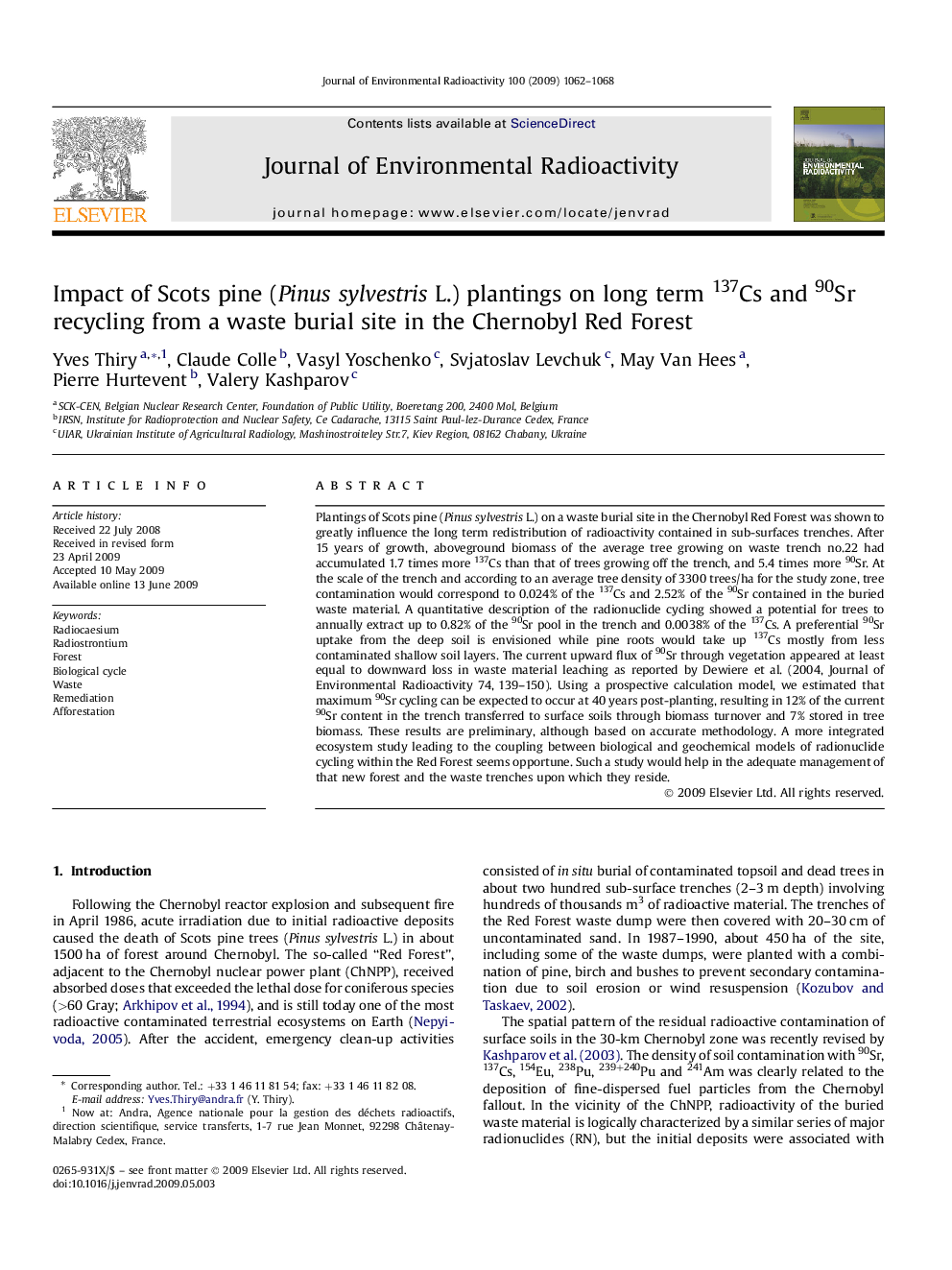| کد مقاله | کد نشریه | سال انتشار | مقاله انگلیسی | نسخه تمام متن |
|---|---|---|---|---|
| 1738949 | 1521630 | 2009 | 7 صفحه PDF | دانلود رایگان |

Plantings of Scots pine (Pinus sylvestris L.) on a waste burial site in the Chernobyl Red Forest was shown to greatly influence the long term redistribution of radioactivity contained in sub-surfaces trenches. After 15 years of growth, aboveground biomass of the average tree growing on waste trench no.22 had accumulated 1.7 times more 137Cs than that of trees growing off the trench, and 5.4 times more 90Sr. At the scale of the trench and according to an average tree density of 3300 trees/ha for the study zone, tree contamination would correspond to 0.024% of the 137Cs and 2.52% of the 90Sr contained in the buried waste material. A quantitative description of the radionuclide cycling showed a potential for trees to annually extract up to 0.82% of the 90Sr pool in the trench and 0.0038% of the 137Cs. A preferential 90Sr uptake from the deep soil is envisioned while pine roots would take up 137Cs mostly from less contaminated shallow soil layers. The current upward flux of 90Sr through vegetation appeared at least equal to downward loss in waste material leaching as reported by Dewiere et al. (2004, Journal of Environmental Radioactivity 74, 139–150). Using a prospective calculation model, we estimated that maximum 90Sr cycling can be expected to occur at 40 years post-planting, resulting in 12% of the current 90Sr content in the trench transferred to surface soils through biomass turnover and 7% stored in tree biomass. These results are preliminary, although based on accurate methodology. A more integrated ecosystem study leading to the coupling between biological and geochemical models of radionuclide cycling within the Red Forest seems opportune. Such a study would help in the adequate management of that new forest and the waste trenches upon which they reside.
Journal: Journal of Environmental Radioactivity - Volume 100, Issue 12, December 2009, Pages 1062–1068